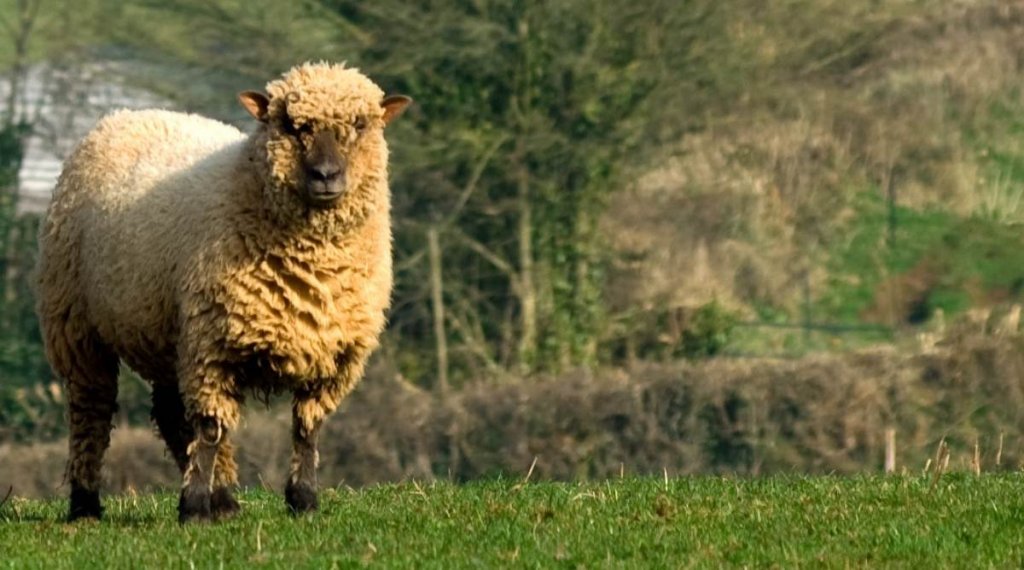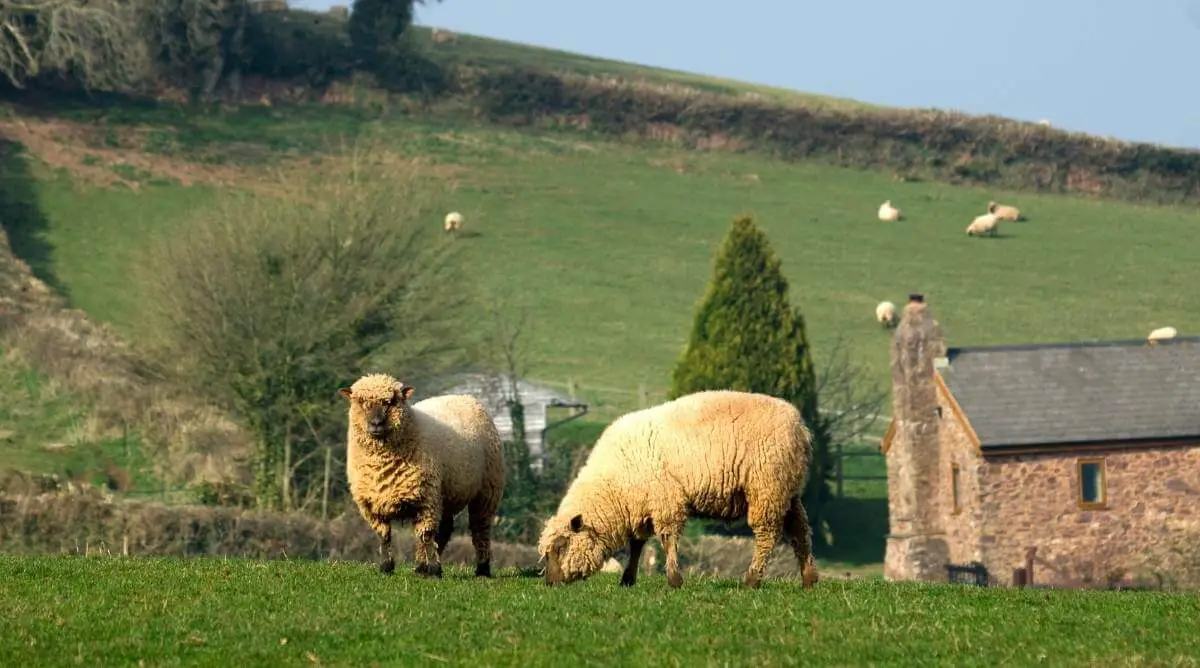Oxford sheep originated in England and are one of the largest breeds of sheep. These large-bodied, hornless sheep are bred primarily for meat production. Oxford sheep require abundant feed and consume large amounts of hay and pasture, and don't do well foraging for food on their own.
Table of Contents
Oxford Sheep Origin
The Oxford breed is a domestic English breed sheep. The breed is the result of crossbreeding the South Down, Cotswold, and Hampshire breeds in the 1830s.
Oxford sheep were introduced to the United States in 1846.
Characteristics of Oxford Sheep
| Characteristics | Description |
| Origin | England |
| Appearance | Polled (hornless) with a big frame. Deep chocolate brown coloring on their face and hears and white, wool-covered limbs. |
| Wool | Fine and thick. Fiber diameter of 30-35 microns. Staple length of 3-5 inches. Yield percentages of 50%-62%. Average fleece weight of 8-12 pounds. |
| Weight | 200-300 pounds (Rams), 150-200 pounds (Ewes) |
| Fertility | Oxford lambs have a fast growth rate. Ewes mate early in the breeding season. Lambing percentages are high at around 150%. |
| Meat | Meaty and large. Oxford sheep are primarily bred for meat production. |
| Environment | Require large amounts of food daily. They do poorly with finding their own food. Adaptable to many climate conditions, but don’t fair well where vegetation is sparse. |
| Common uses | Meat production. |
Strong and large-bodied, Oxford sheep are hornless and have a big frame, deep chocolate brown coloring on their face and ears, and white wool-covered limbs. The area behind the ears is commonly very woolly. The nose is usually marked white.
Good health is defined by pink skin and alert, sparkling eyes.
Oxford Sheep Fertility
Oxford lambs have a fast growth rate. At birth, the lambs are hardy, strong, and energetic.
Purebred Oxford ewes are docile in nature and possess very good mothering instincts and abilities. The ewes are suited to early lamb production because they are known to mate early in the breeding season. Lambing percentages are high at around 150%.
Oxford Sheep Wool

Oxford wool has a good staple and is fine and thick. The fleece can be so tight that it’s hard to grasp a handful of the wool.
Mature ewe fleece has a fiber diameter of 30-35 microns, with a staple length of 3-5 inches. Yield percentages are between 50%-62%. Mature ewes have an average fleece weight of between 8-12 pounds.
Oxford Sheep Meat Production
Oxford sheep are primarily bred for meat production. Their carcasses are meaty and large. With the right feeding regime, this breed is invaluable to the production of market lambs.
Mature Oxford ram weights range from 200 to 300 pounds. The ewes are smaller, with an average weight of 150 to 200 pounds.
Which Environments Are Best for Oxford Sheep?
Oxford sheep thrive under feeding conditions that allow them to eat in abundance. They are known to consume vast amounts of hay or pasture daily.
While Oxford sheep have adapted to many climate conditions, they do not fair well where vegetation is sparse. They do poorly with finding their own food.
Oxford Sheep Association
The Oxford Down Sheep Breeder’s Association encourages the breeding of the Oxford sheep and maintains breed purity.
The association is responsible for Oxford Down sheep pedigree registration in the Flock Book. The society takes control of organizing sales and shows within the UK and promotes the breed at agricultural shows and events.

